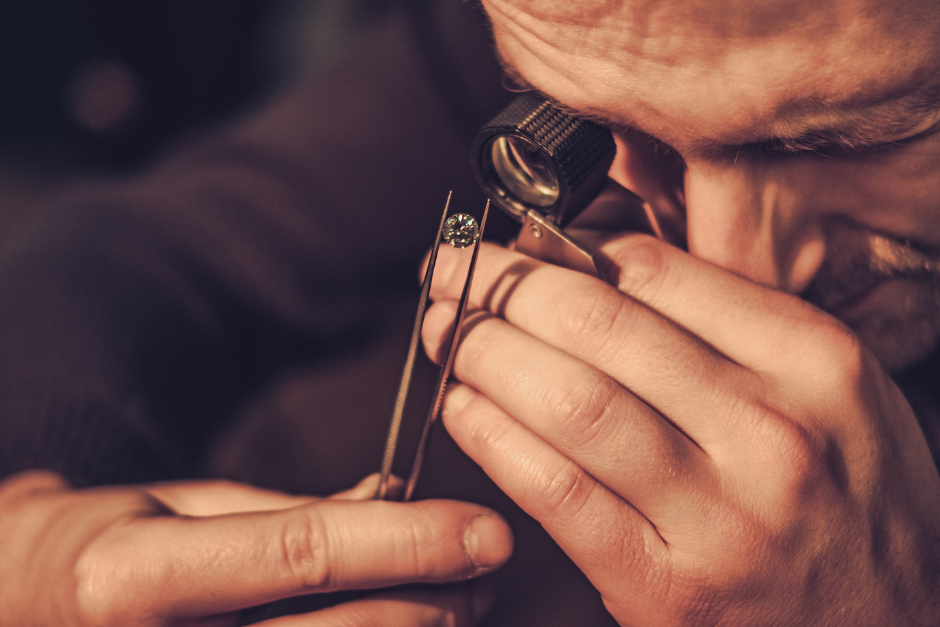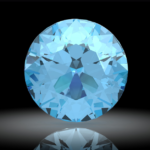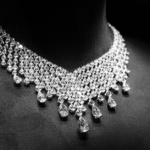Tools of the trade – the instruments we use to assess your jewellery
Jewellery valuation and gemmology are very specialised fields. Accurately examining and appraising jewellery and gemstones takes years of practice. It also require specialist tools – more than you might think! Here are a few of the tools we use at Wellington Jewellery Valuations to give you the most accurate and detailed valuation possible.
Loupe hand lens
A loupe (pronounced loop) is a magnifier that we use to inspect gemstones and other jewellery. Loupes have special lenses that allow a person’s eyes to focus on an object at a much closer distance than is normally possible. They make the object appear to be larger and reveal tiny details we couldn’t see with our normal vision.
Microscope
We use a microscope because it allows for greater magnification than the loupe so opens up a whole new world of information. It allows us to see minute details that can help identify unknown gemstones. Gemmology microscopes are more advanced than an ordinary microscope as they manipulate light. They also have jewel clamps or tweezers that are built to hold the stone in place.
Cumulative wear and tear of jewellery items impact the metals and gems. Sometimes it isn’t easy to see these changes and they become apparent only when there’s a major structural failure or a stone falls out. However, we may be able to see early signs of this using a microscope, so you can have preventative maintenance that’ll extend the lifetime of your item and allow other generations to enjoy it.
Polariscope
A polariscope allows us to study the properties of gemstones in polarized light. This allows us to determine whether the stone is singly refractive (when a ray of light passed through the gemstone, it does not split and therefore remains a single beam as it exits), or doubly refractive (when a ray of light passes through the gemstone, it is slowed, bent, and split in two).
Refractometer
We use a refractometer to measure the refractive index of a gemstone. Refraction is the bending of light as it passes in or out of a gem. The angle of refraction in the stone determines its refractive index. Gemstones with a high refractive index are more brilliant than those with a low one. Diamond has a refractive index of 2.42; quartz, 1.54-1.55.
Ultra violet lamp
We look at gemstones under UV light to help us identify gemstone treatments and assembled stones. Treated gems, oils used as fillers in emeralds and other gems, and the components of assembled stones often have different fluorescent qualities than the rest of the gem. Seeing this at an early stage of our examination can save time later.
Colour filters
Colour filters are small pieces of plastic that allow only part of the visible spectrum of light to pass through. To use one, we shine a light on a gemstone and look at the gem through the filter. Then, we compare the colour we see to a reference sheet. This is never used as proof of a gemstone identification, but can help us eliminate some possibilities.
Spectroscope
Colour alone tells you little about a gem. By using a spectroscope, we get a fuller view of how gems interact with light and get their colour. Seeing which wavelengths of light a particular gemstone absorbs can help us identify it. It can also help to determine if a gem is natural or synthetic or if it’s been subjected to colour treatments, like dyes.
Thermal probe tester
A thermal probe measures the thermal conductivity of a gemstone. Measuring the thermal properties of gemstones is a simple, non-destructive test that can be very useful for gem identification.
Metal testing equipment
We also use an electronic metal tester, acid testers, and an XRF metal anaylser to help us identify and evaluate precious metals.





No Comments